EXPLORE
20 Most Beautiful Orange Perennials
Published
3 months agoon
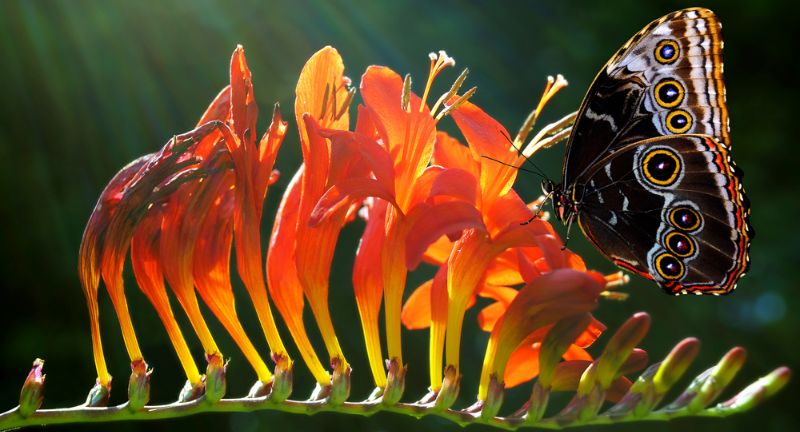
Shutterstock
Orange perennials bring a bright and vibrant energy to gardens, radiating warmth and inviting smiles. These flowers, ranging from fiery red-oranges to soft peachy tones, are perfect for creating a striking visual impact in any outdoor space. They not only enhance the garden’s aesthetic but also attract a variety of pollinators, supporting local biodiversity. With choices suitable for sunny borders, woodland edges, or even rocky garden paths, orange perennials offer versatility and style. This guide highlights twenty of the most beautiful orange perennials, each capable of transforming your garden into a lively, colorful retreat.
California Poppy
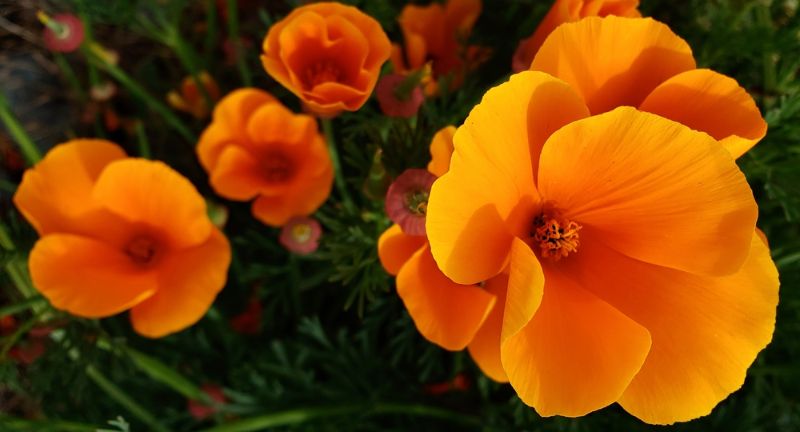
Shutterstock
The California Poppy, the state flower of California, is renowned for its brilliant orange blooms that capture the essence of sunny fields. It flourishes in poor, dry soils, making it perfect for arid or drought-prone gardens. Its satiny flowers close each evening, or on cloudy days, adding a dynamic element to its display. This plant is not only beautiful but also easy to grow, requiring minimal care once established in the garden.
Geum
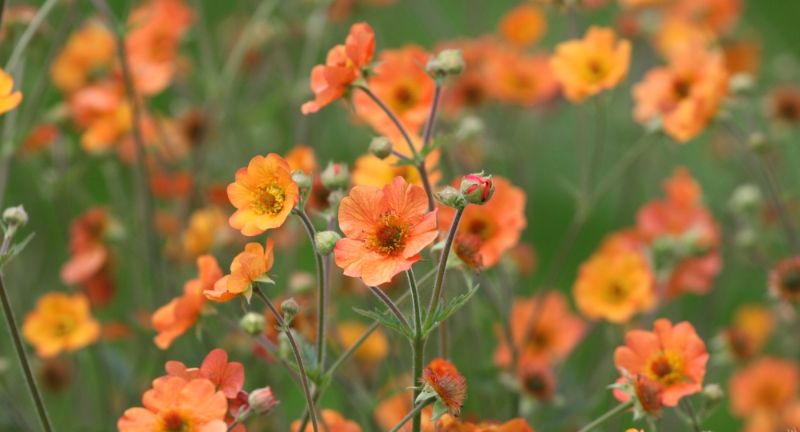
Shutterstock
Geum ‘Totally Tangerine’ produces a profusion of vibrant, tangerine-orange flowers that bloom from late spring through midsummer. The bright blossoms are borne on tall, airy stems that wave elegantly above the compact, mound-forming foliage. This perennial is particularly valued for its long flowering period and its ability to attract pollinators such as bees. Geum is an excellent choice for borders, cottage gardens, or for adding a pop of color to rock gardens.
Butterfly Weed
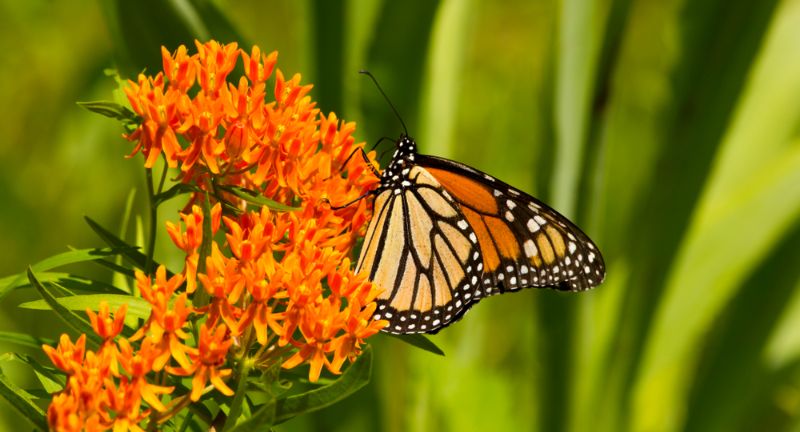
Shutterstock
Butterfly Weed (Asclepias tuberosa) is a crucial plant for the monarch butterflies, providing essential nutrients necessary for their migration. Its vibrant orange flowers stand out in any garden setting, blooming profusely from early to late summer. This native perennial is drought-resistant once established and thrives in full sun. Besides its environmental benefits, its striking appearance makes it a favorite among gardeners looking to create a pollinator-friendly garden.
Canna Lily

Shutterstock
Canna Lily ‘Tropicanna’ is celebrated for its large, banana-like leaves and spectacular spikes of iridescent orange flowers. The dramatic foliage often features stripes of green, bronze, and gold, adding to its visual impact. Canna Lilies prefer a full sun position and thrive in moist, well-drained soil. They are perfect for use as a focal point in tropical-themed gardens or in large containers on patios and decks.
Daylily

Shutterstock
Daylily ‘Primal Scream’ captivates with its large, vibrant orange flowers that can reach up to eight inches in diameter. Known for its twisted petals and a bloom season that lasts from mid to late summer, this variety is a showstopper in any garden. Daylilies are extremely adaptable and virtually maintenance-free, thriving in almost any soil type. Their robust nature and stunning display make them a staple in perennial gardens across various climates.
Sneezeweed
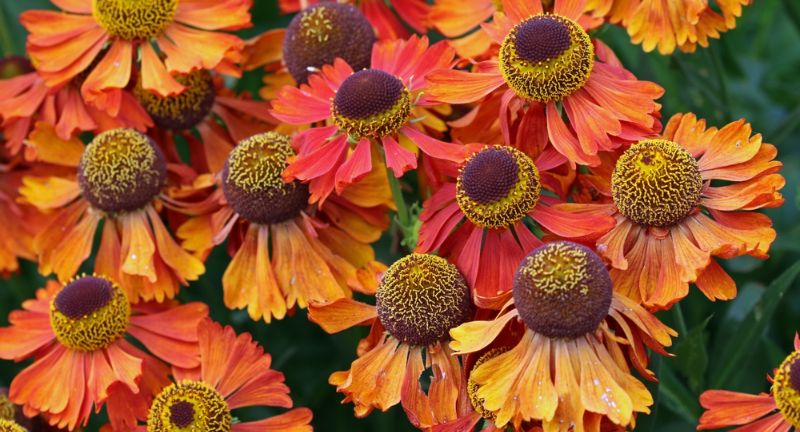
Shutterstock
Sneezeweed ‘Moerheim Beauty’ is notable for its unique flower shape with deep orange petals and a prominent, darker central cone. This late-summer bloomer adds vibrant color to the garden when many other plants are beginning to fade. It thrives in full sun and well-drained soil, making it ideal for borders and pollinator gardens. Despite its common name, Sneezeweed does not actually cause sneezing; the name derives from its historical use in making snuff.
Montbretia

Shutterstock
Montbretia (Crocosmia) provides a fiery accent with its arching sprays of funnel-shaped orange flowers. This perennial is excellent for creating bold drifts of color in sunny borders, where its flowers rise above sword-like foliage. Crocosmia bulbs multiply over time, creating fuller and more dramatic displays each year. Their ease of care and vibrant blooms make them a favorite among gardeners who want to add a touch of the exotic to their landscape.
Mexican Sunflower
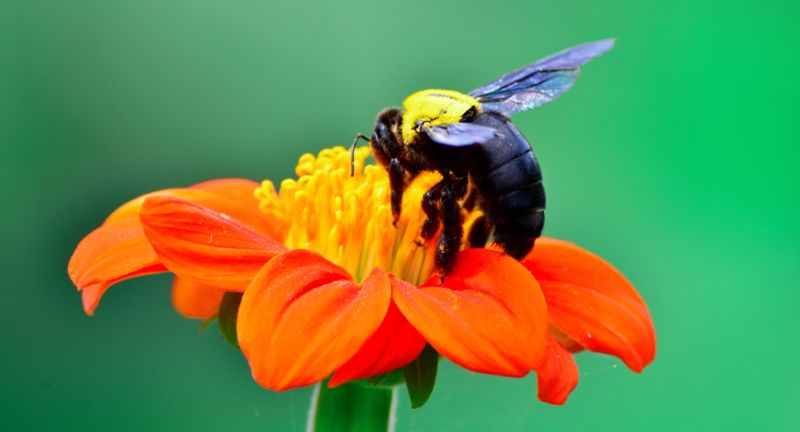
Shutterstock
The Mexican Sunflower (Tithonia rotundifolia) is a robust, tall plant that produces large, daisy-like orange flowers. It’s particularly loved by butterflies and bees, making it an excellent choice for pollinator gardens. Thriving in hot, sunny conditions, this sunflower can reach heights of up to six feet, providing a striking backdrop or focal point. Its vibrant orange blooms last from mid-summer to fall, offering a long season of color and interest.
Lion’s Tail
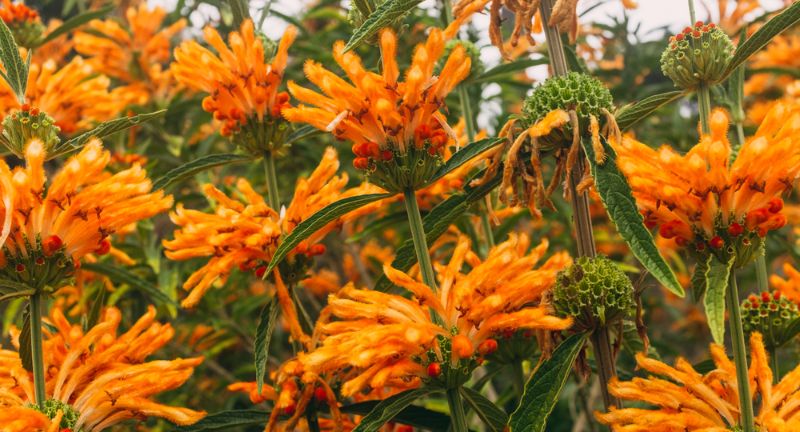
Shutterstock
Lion’s Tail (Leonotis leonurus), also known as Wild Dagga, features whorls of striking orange flowers that resemble a lion’s tail. This South African native is drought-tolerant and thrives in sunny, dry areas, making it ideal for xeriscaping. The tubular flowers are a favorite among hummingbirds and butterflies, adding ecological value to the garden. Its unique floral architecture and ease of care make it a fascinating and exotic addition to any landscape.
Kniphofia
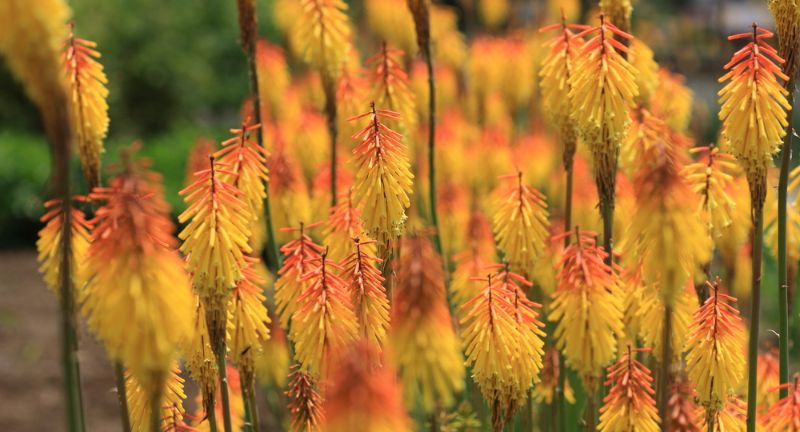
Shutterstock
Kniphofia, commonly known as Red Hot Poker, is celebrated for its bold spikes of densely packed flowers that can range from fiery red to orange. This striking plant is a superb choice for adding vertical interest to the garden. Kniphofia thrives in full sun and well-drained soils, making it a low-maintenance option for busy gardeners. Its dramatic appearance and ability to withstand dry conditions make it a popular choice for hot, sunny borders.
Oriental Poppy

Shutterstock
Oriental Poppy (Papaver orientale) is renowned for its large, show-stopping silky blooms that can make any garden space feel like a vibrant showcase. The flowers of the Oriental Poppy burst into bloom in late spring, providing an intense splash of color with a surreal quality. These perennials are surprisingly hardy despite their delicate appearance and go dormant in the summer after flowering. Plant them alongside late summer bloomers to ensure continued color in your garden throughout the season.
Iceland Poppy
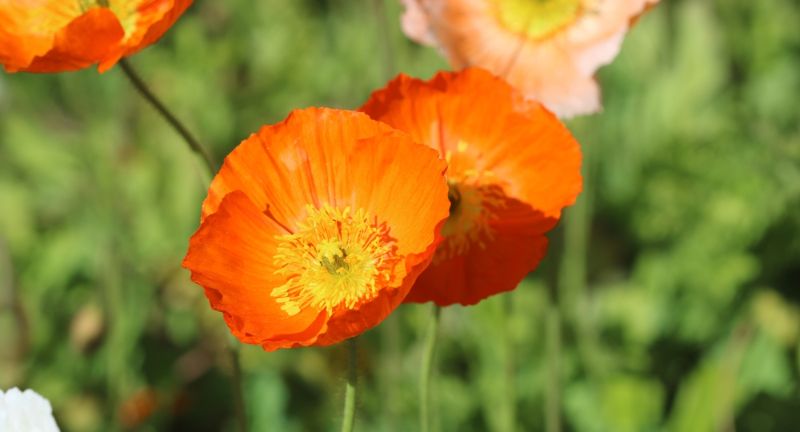
Shutterstock
Iceland Poppy (Papaver nudicaule) features delicate, cup-shaped blooms that sway gracefully on slender stems above a rosette of feathery foliage. This poppy variety is particularly noted for its soft, translucent petals and bright orange color that can warm any garden setting. Iceland Poppies prefer cool weather and can be planted in both spring and fall for extended blooming periods. Their cheerful, light-filled blossoms are ideal for cutting and bringing indoors to brighten up any space.
Wallflower
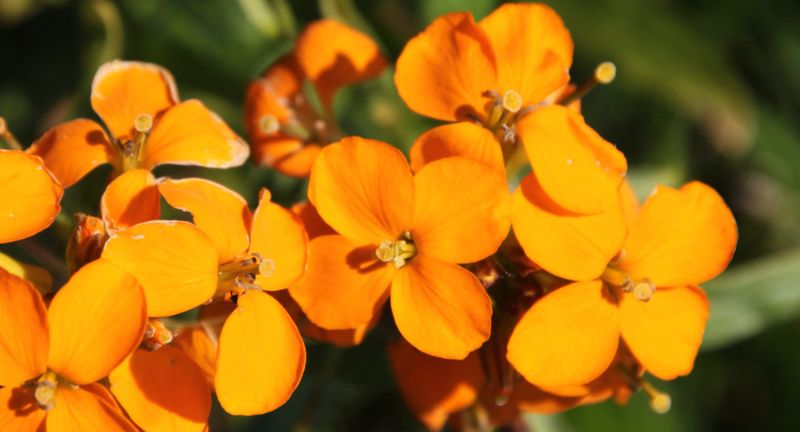
Shutterstock
Wallflower (Erysimum ‘Apricot Twist’) is a long-blooming perennial that can add continuous color from spring through fall with its clusters of fragrant, bright orange flowers. It’s a particularly resilient plant, adapting well to a variety of soil conditions and thriving in both sun and partial shade. Wallflowers are excellent for adding height and a splash of color to rock gardens, borders, and containers. Their enduring fragrance and robust nature make them a favorite among gardeners looking for reliable and attractive perennials.
Gazania
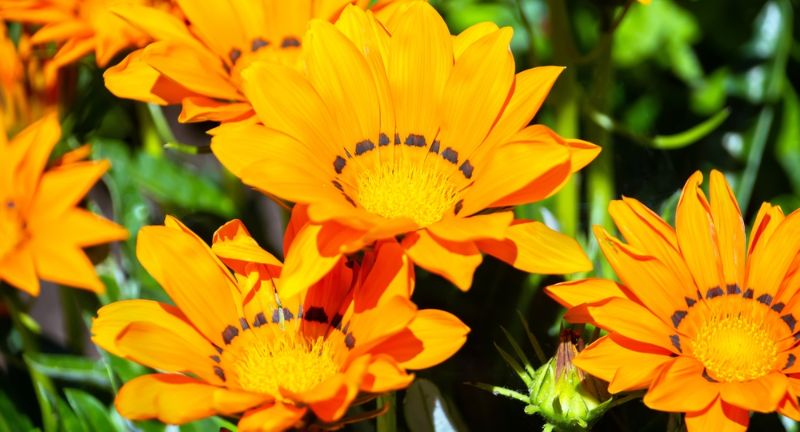
Shutterstock
Gazania, often referred to as Treasure Flower, is prized for its daisy-like flowers that come in a range of vivid colors, including striking shades of orange. These sun-loving perennials are ideal for hot, dry areas where other flowers might struggle. Gazanias open in full sun, showing off their bright colors and intricate patterns, and close at night or on cloudy days. Their drought tolerance and low maintenance requirements make them perfect for rock gardens, slopes, and coastal environments.
Torch Lily
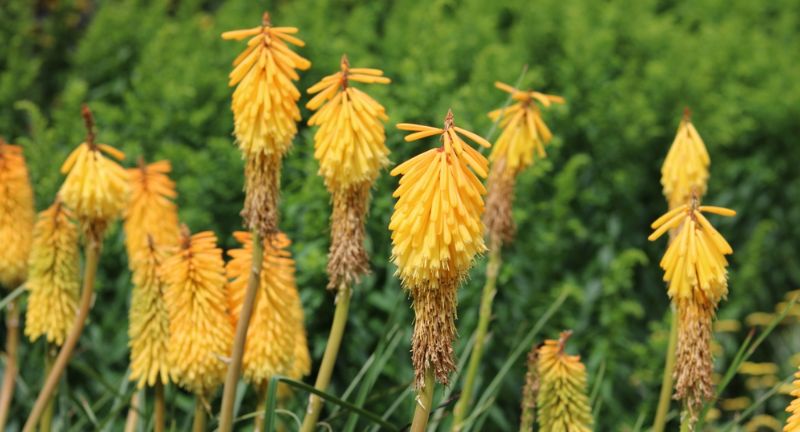
Shutterstock
Torch Lily ‘Mango Popsicle’ is a perennial favorite known for its bright, mango-orange blooms that appear on spikes throughout the summer. This variety of Kniphofia attracts a variety of pollinators, including hummingbirds and bees, with its nectar-rich flowers. The ‘Mango Popsicle’ offers a compact form that is perfect for smaller gardens or as part of a mixed perennial border. Its fiery blooms provide a continuous display of color, even in the hottest parts of the summer.
Impatiens
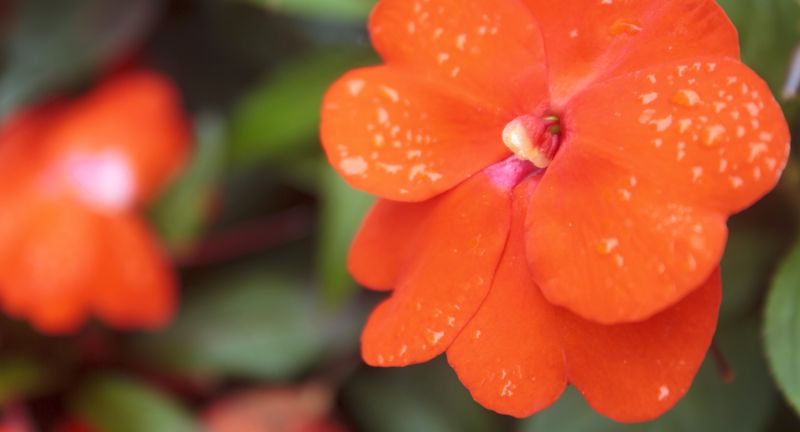
Shutterstock
Impatiens hawkeri, also known as New Guinea Impatiens, features bright orange flowers that bring a vibrant splash of color to shady garden spots. Unlike traditional impatiens, this variety thrives in both shade and partial sunlight, making it versatile for different garden settings. These impatiens are noted for their robust growth and larger, more vividly colored flowers compared to other species. They are excellent for container plantings or mass plantings in landscape beds, providing a lush, colorful display all season long.
Chrysanthemum
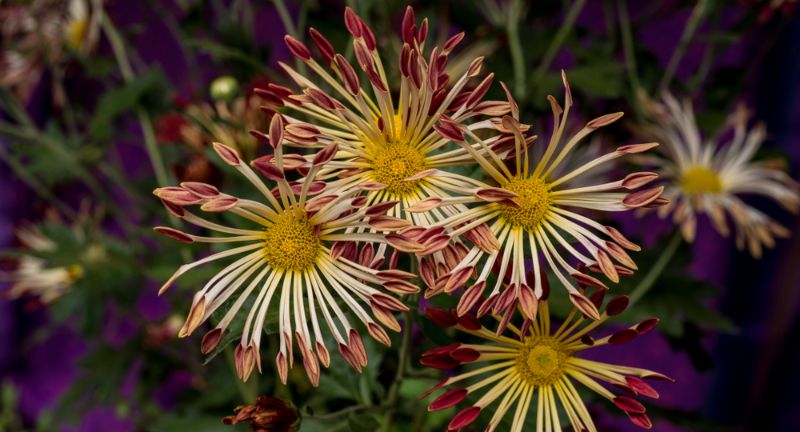
Shutterstock
Chrysanthemum ‘Matchsticks’ offers a unique and playful look with its fringed petals that combine fiery yellow and orange hues. This perennial chrysanthemum adds texture and a burst of late-season color to the garden, blooming profusely in the fall. The vibrant colors and unusual flower form make ‘Matchsticks’ a standout in any floral arrangement or garden display. It is ideal for borders, pots, and as a vibrant addition to autumn gardens.
Pot Marigold
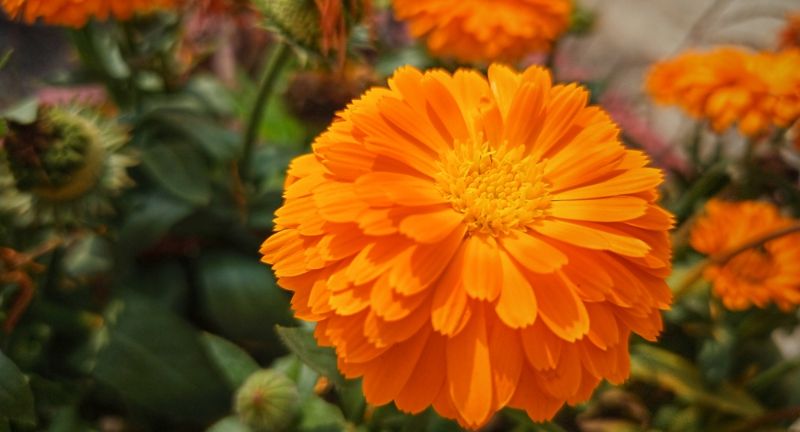
Shutterstock
Pot Marigold (Calendula officinalis) is renowned for its medicinal properties and vibrant, deep orange blooms. This easy-to-grow plant is perfect for beginners and can be used to add color to vegetable gardens or as an ornamental feature in borders and containers. The flowers are not only beautiful but are also edible, adding a splash of color to salads and desserts. Calendula is particularly valued for its ability to thrive in cooler temperatures, making it a great choice for extending the flowering season.
Azalea

Shutterstock
Azalea ‘Gibraltar’ is an exceptionally vibrant form of Rhododendron, which is celebrated for its large clusters of frilly, bright orange flowers each spring. This azalea variety is particularly noted for its lush, deciduous foliage that provides a stunning backdrop to its vivid blooms. ‘Gibraltar’ thrives in well-drained, acidic soil and partial shade, making it ideal for woodland gardens or shaded borders. The intense color and striking appearance of this azalea make it a favorite among garden enthusiasts looking to add a dramatic flair to their outdoor spaces.
Tulip
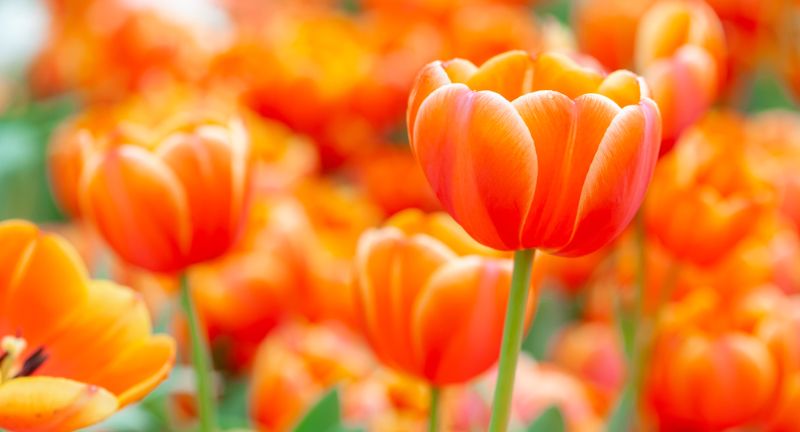
Shutterstock
Tulip ‘Ballerina’ enchants with its lily-flowered form and vibrant orange blooms that appear in mid to late spring. This tulip variety is known for its elegant shape and striking color, making it a standout addition to any spring garden. ‘Ballerina’ tulips have a delightful fragrance and are excellent for cut flower arrangements. Plant them in full sun to light shade in well-drained soil to encourage the best performance and a stunning display each year.
Conclusion
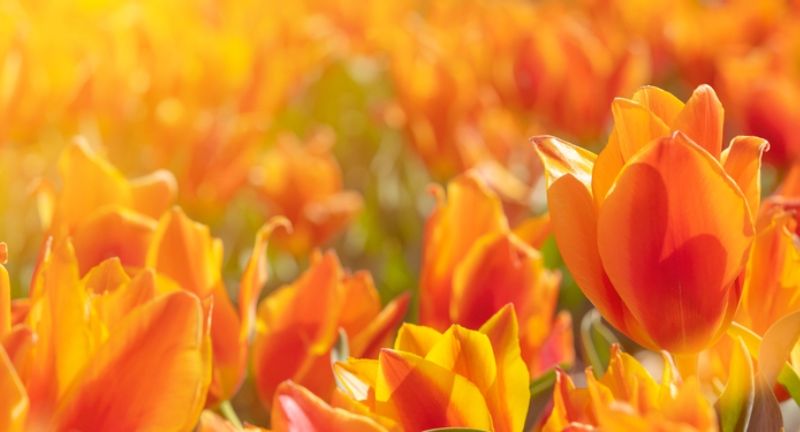
Shutterstock
The vibrant allure of orange perennials makes them a captivating choice for gardeners looking to add a splash of warmth and cheer to their landscapes. From the subtle glow of early spring blooms to the bold, fiery displays of late summer, these plants offer a continuous parade of color. By incorporating these selections into your garden, you not only brighten your own outdoor spaces but also provide essential habitats for pollinators. Each plant mentioned has its own unique charm and growing requirements, giving gardeners the flexibility to tailor their choices to their specific conditions and tastes. Ultimately, the infusion of orange perennials can turn any garden into a dynamic and inviting living canvas.
More From Bon Voyaged
-


25 Cities From Around The World That Are Actually Considered…
-


9 Strange Places Totally Off Limits
-


8 Tips Cruise Travel Agents Leave Out When Helping You
-


8 Fascinating Facts About The Sun
-


14 Beautiful Places To Visit Before They Disappear
-


12 of the Hardest Fish to Catch in Salt Water
-


Reel in the Fun: America’s Top 25 Fishing Destinations
-


25 Top Cruise Destinations For Older Adults
-


30 Beaches So Beautiful You’ll Rethink Your Next Vacation
-


11 Most Astonishing Places That Exist On Earth
-


20 Countries And The Most Popular Soft Drink According To…
-


Most Popular Coffee Shops In 20 Different Countries

